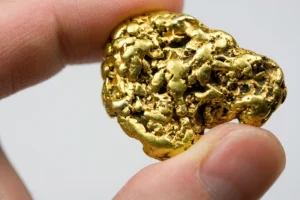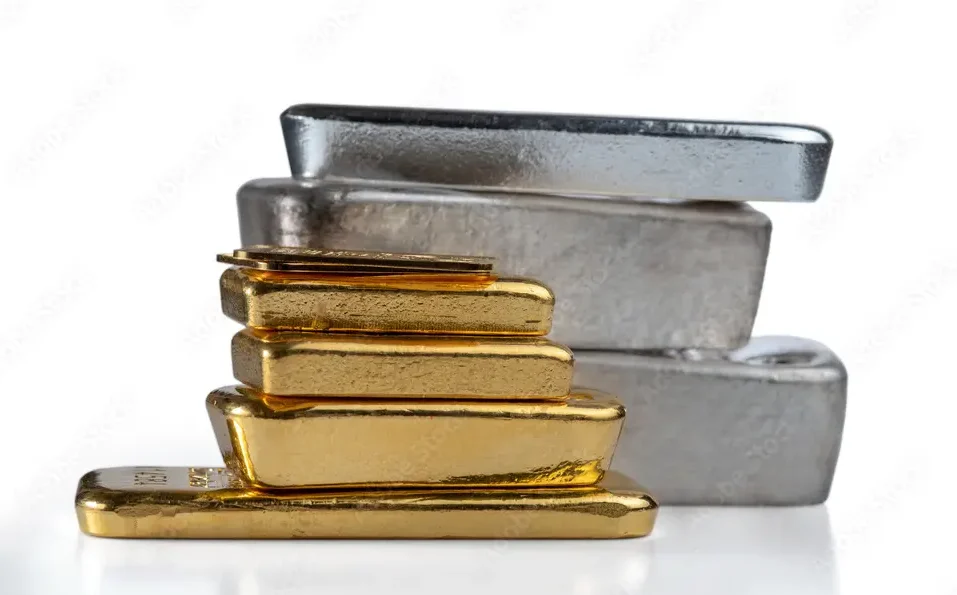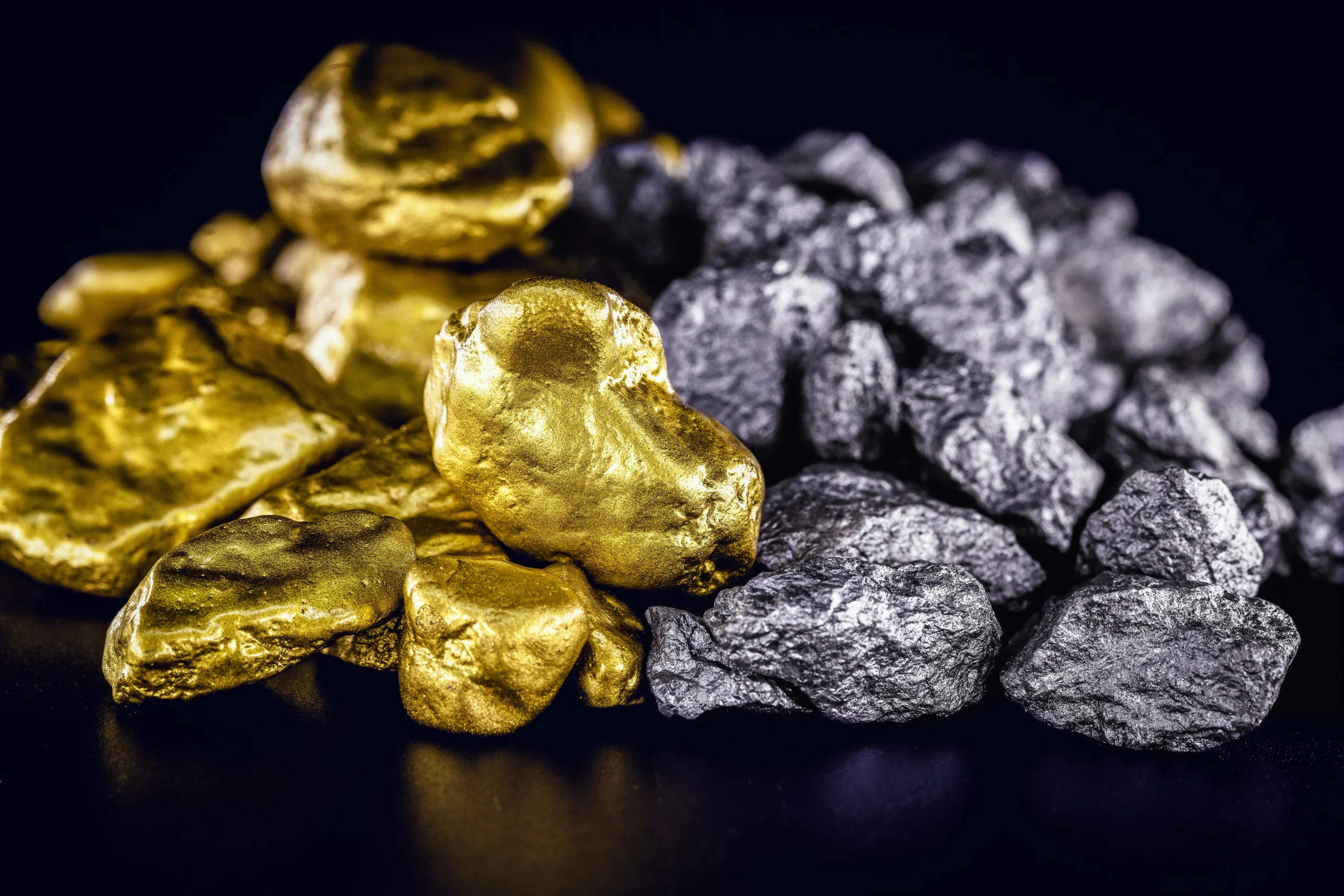In the realm of precious metals, gold certainly takes center stage. But silver’s unique traits and wide range of uses are well worth exploring too. While silver and gold share a lot of common ground – they’re both valuable commodities, often used in jewelry, and were big players in the history of currency – they also have many contrasts. So what are the major differences between gold and silver, not just chemically, but in how they’re used around the world?
Silver and Gold’s Similarities
Despite their differences, gold and silver hold a few noteworthy similarities. For example, both silver and gold are great conductors of electricity, meaning that they can carry electrical currents with minimal resistance. While silver is considered to be the most conductive metal, gold ranks in third place, right behind copper.
Silver vs. Gold – Density & Strength
Is silver stronger than gold? Technically yes, but not by much. The strength of a metal isn’t measured by its density or weight, but rather by its tensile strength and hardness. As far as metal strength goes, silver and gold are both on the softer side and can be scratched and dented pretty easily. But of the two, silver is slightly stronger than gold. In the making of jewelry and coins, both silver and gold are often alloyed with other metals to increase strength and durability.
When it comes to density, gold takes the cake. Gold has a density of 19.32 grams per cubic centimeter, compared to silver’s 10.49 grams. So for any given volume, a piece of gold weighs almost twice as much as a similar-sized piece of silver! This is why it’s much easier to store large amounts of gold – it doesn’t require nearly as much space as the same weight of silver would.

Unique Traits of Gold
Gold is the most noble (aka chemically stable) of all metals, as it doesn’t react with oxygen or water. Gold is renowned for being exceptionally resistant to corrosion, oxidation and tarnishing, which makes for great durability. Gold is also the most malleable metal, meaning that it can be stretched and beaten into thin sheets without breaking. This makes gold great for shaping into thin, delicate pieces – which is useful in a wide range of applications, from electronics to gold leaf in art, decoration, gilding, and even gourmet food dishes.
Gold is also prized for its biocompatibility (the ability to exist inside the human body without adverse effects), especially in the dental industry. This is why gold is so commonly used in dental crowns and bridges.
Unique Traits of Silver
While silver isn’t chemically stable enough to be classified as noble metal like gold, it’s still relatively stable in the realm of all metals, especially compared to others like iron and aluminum. Silver is stable in pure air and water, but it will tarnish quickly upon exposure to air containing higher levels of ozone, hydrogen sulfide or sulfur. Interestingly, the amount of sulfur in the atmosphere has increased in the past 200 years, so silver tarnishes more quickly than it did in pre-Industrial times.
Silver is super unique and versatile, with multifaceted uses as both a precious and industrial metal. Silver is the most reflective of all metals, reflecting about 95% of visible light. This high reflectivity makes silver useful in mirrors, telescopes, solar panels and more.
Silver’s Antibacterial Powers
One of the most intriguing things about silver is that it has natural bacteria-fighting properties. Throughout history, people have used vessels made of silver to store water and other liquids as a way to prevent bacterial growth. During the Middle Ages, people used to drop silver coins into barrels of water or milk on long journeys to preserve freshness. Families also used silver utensils to protect themselves from harmful microbes during the Bubonic plague.
Today, silver is still used in the form of nanoparticles in various medical applications, such as wound dressings and catheters, to prevent infections. Even everyday products like laundry detergents use silver nanoparticles to eliminate bacteria.

Silver’s Industrial Value
Silver’s antimicrobial properties make it useful for water purification, food packaging and medical applications like wound care. It’s also used in the filters of air conditioning units and air purifiers to eliminate bacteria. Even the textile industry makes use of silver, infusing fabric with this precious metal to help prevent odor and fight bacteria.
And because it’s so reflective, silver is used in mirrors, photography and solar panels. Silver-based film has been used in photography since the 1800s, and some photovoltaic solar panels contain as much as 20 grams of silver!
Another cool use of silver involves using it as a catalyst in the production of ethylene oxide and formaldehyde, which are used to create polyester, plastic adhesives, toys and more.
Silver and Gold’s Many Uses
Gold and silver share several common uses, such as in jewelry, bullion, and electronics. But overall, gold tends to be more luxurious while silver is more industrial. Gold and gold alloys are often used for luxury items like fancy pens, eyewear, cutlery, and even golf clubs. Silver, on the other hand, has a wide range of industrial applications – from smartphones and laptops to batteries, electric cars, jet and helicopter engines, medical equipment and more.
Gold vs Silver Jewelry
When shopping for jewelry, you may find yourself wondering, “Does gold or silver look better on me?” Many people will consider their skin’s undertone when trying to decide between silver and gold jewelry. Admittedly we’re no fashion experts here at Garfield – but in our humble opinion, why not just experiment with different pieces and have fun? Maybe you have a neutral skin tone, so both gold and silver look great on you. Or maybe you have no idea what your skin’s undertone is, but you like to mix and match gold and silver pieces.
Aesthetics aside, it’s wise to consider which type of metal will last longer and require the least amount of maintenance over time. From this perspective, gold or a gold alloy such as white gold or rose gold may be an ideal choice for everyday pieces like an engagement ring.

White Gold vs Silver
At a glance, it’s hard for the untrained eye to distinguish the difference between white gold and sterling silver jewelry. They’re both silver in color, but the two metals are quite different beneath the surface.
White gold is an alloy of pure gold and other white metals such as nickel, palladium, or silver. Sterling silver is an alloy containing 92.5% silver and 7.5% of another metal, usually copper. Fine silver (99.9% pure) is soft, so the sterling silver alloy increases strength.
While both white gold and silver jewelry can last a very long time with proper care, silver is definitely less durable overall. It’s more prone to tarnishing and easier to dent and scratch, while white gold is resistant to both corrosion and impact.
Gold vs Silver as Investments
Gold and silver are both popular investments that can act as stores of value and inflation hedges. While they’ve both been highly regarded for centuries, gold and silver will offer different benefits to your portfolio. Gold is significantly rarer than silver, which contributes to silver’s lower market value compared to gold.

Compared to silver, gold has more limited uses beyond jewelry and investment purposes. Silver’s demand is driven more by industrial uses like electronics, solar panels, automobiles, power grid infrastructure and more. Because of silver’s industrial demand, it’s more tied to the global economy, making it more sensitive to economic changes than gold.
Gold can be a stronger diversifier than silver, as it’s been consistently uncorrelated to stocks and other major asset classes. Gold also has a much higher value and offers greater stability. On the other hand, silver is more affordable than gold.
When deciding whether to invest in silver or gold, you’ll need to consider your risk allowance and how much you’d like to invest. If you’re looking to invest a smaller amount of money, you may want to buy silver.
Gold, on the other hand, may be your best bet if you’re looking to diversify your portfolio with less risk.
Gold is also extremely liquid – when you’re looking to cash in on your investment, it’s very easy to sell gold. (And a refinery like Garfield will get you the best return!)
Historical Significance of Gold and Silver
Gold has been cherished as a valuable commodity and symbol of wealth since ancient times. Many ancient civilizations, such as the Egyptians, Greeks and Romans used gold as a form of currency due to its durability and intrinsic value. And while silver was also used as currency, it was valued lower than gold because it’s less rare.
Gold has often been seen as a symbol of status, wealth, power and royalty. Gold was historically used to create jewelry, decorate palaces and temples, and craft religious artifacts. Conversely, silver was more widely accessible and used by merchants, artisans and commoners.
Gold holds deep cultural significance in many societies and is often associated with gods and purity. It’s commonly featured in myths, legends and religious ceremonies. While silver also has cultural significance, it’s seen as a more mundane metal than gold.
The Dynamic Duo
All in all, both gold and silver are incredibly valuable metals that have played major roles in global cultures, financial systems and industrial advancements throughout history. They each boast unique, impressive traits and many useful applications. Both of these precious metals play distinct roles in the global economy and are universally cherished in the forms of jewelry and bullion.
From the Earth’s crust to our jewelry, silverware and electronics, the world as we know it today wouldn’t exist with silver or gold. Comparing the different chemical properties, uses and market dynamics of these two precious metals is a fascinating way to grow more appreciative of the Earth’s elements and how they’ve shaped our lives.
Stay tuned to our blog for more insights on precious metals! Check out other fun articles like 5 Fun Facts About Silver, Buying and Selling Gold Bullion, and Is Gold Rare in Space?
Established in 1892, Garfield will get you the most for your gold, silver, platinum, and palladium, and we offer the industry’s best customer service. Consider selling your precious scrap metal now by downloading a free shipping label.

